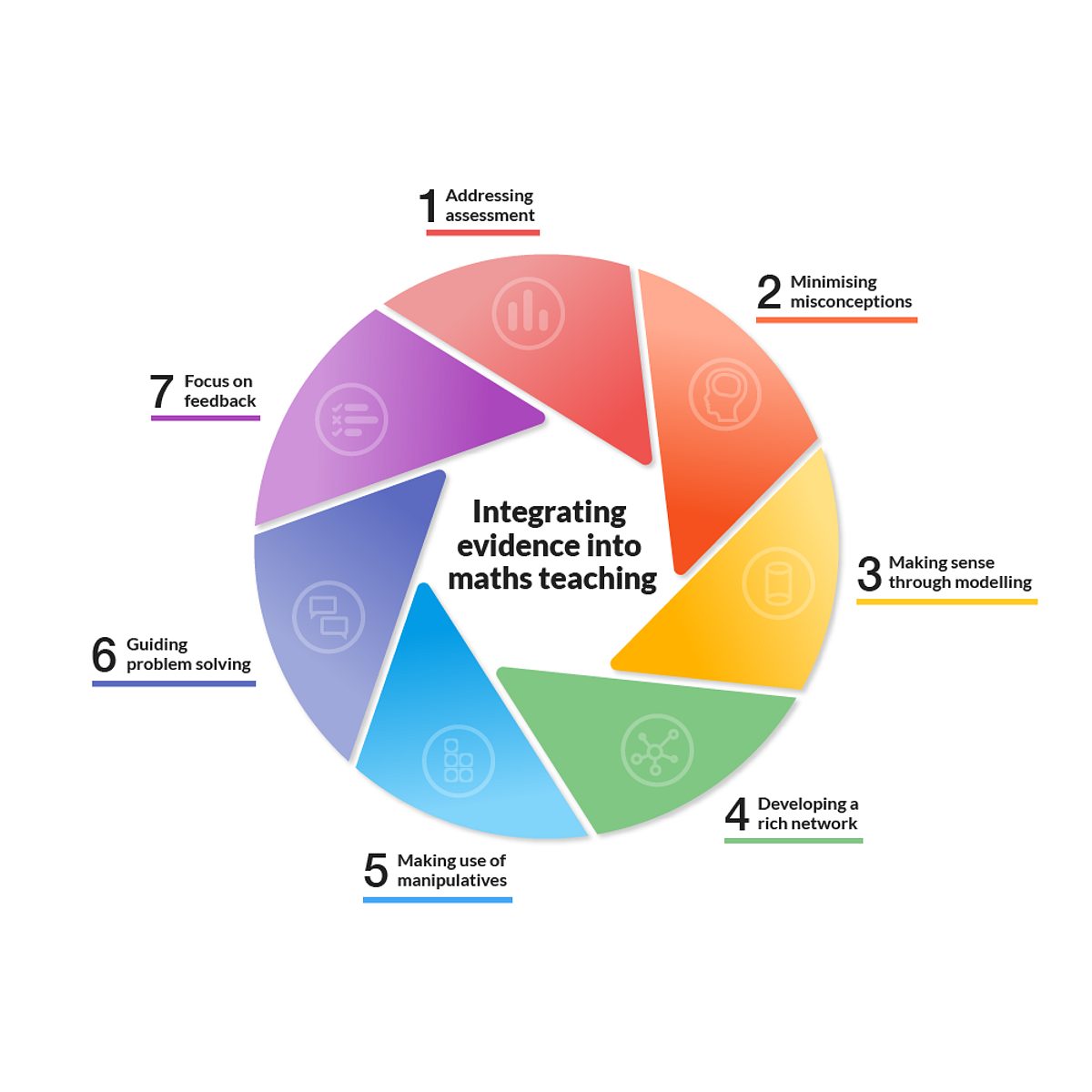What are your existing beliefs and assumptions about problem solving?
- Does ‘problem solving’ in mathematics generally mean the solving of worded mathematical problems?
- Can we teach effective problem-solving strategies to our pupils?
- Is it desirable for pupils to develop multiple strategies for solving the same problem?

If all teachers of mathematics in your school were asked these questions, would there be broad agreement in their answers?
Being able to solve problems is one of the three key aims of the National Curriculum for mathematics in England, but there remains debate about what we actually mean by this and what it might look like in the classroom
While all teachers are aware of its importance, it is useful to consider the evidence around problem solving to consider more fully how we might ‘nudge’ our practice in a more evidence-informed direction. Our guidance report, based on an extensive review of the evidence on teaching KS2 and 3 mathematics, found that:
- Teachers should select genuine problem-solving tasks that pupils do not have well-rehearsed, ready-made methods to solve.
- We should consider organising teaching so that problems with similar structures and different contexts are presented together, and, likewise, that problems with the same context but different structures are presented together.
- Pupils should be taught to use and compare different approaches.
- Pupils should be encouraged to use visual representations.
- Teachers should use worked examples to enable pupils to analyse the use of different strategies.
- We should require pupils to monitor, reflect on, and communicate their reasoning and choice of strategy.
So, what might this look like in the classroom?
Some children can appear to be ‘expert’ problem solvers. We can all point to examples of pupils who engage successfully with all problems that come their way – effectively navigating a path through even the most challenging of mathematical terrains.
But the extent to which this happens differs significantly between learners – and many will not spontaneously develop all the strategies they need, or would find useful. Therefore might require explicit instruction in key problem-solving strategies.
Explicitly teaching strategies to support pupils in planning their approach to a problem, in monitoring progress towards their goal, and in evaluating their success in solving a mathematical problem, can help. Initially this might be teacher-led (perhaps modelled via a ‘think aloud’ process) with a series of steps which lead towards independent work and reflection.
As a starting point, we might work with pupils on what to do when faced with an unfamiliar problem. The temptation for some might be to give up, or to immediately look to the teacher for guidance. And yet, the use of prompts – such as those below – can begin to support pupils in developing the resilience to tackle a task:
Planning my approach
- What is the problem asking me to do?
- Have I seen problems before that look like this one?
- What mathematics might help me to solve this problem?
- What information in the problem is important?
- What information is less important?
- What might I need to work out?
- Would drawing a diagram help?
Once a strategy is in place, it can be helpful to monitor the progress being made – stopping and reflecting on the effectiveness of the chosen approach and perhaps sharing findings with peers. Again, a list of prompt questions can help:
Monitoring my progress
- Is my chosen strategy working?
- Are there different ways to solve this problem?
- Should I think about solving this problem in a different way, or should I stick with my plan?
- Has my teacher shown me anything which might help me here?
- Would it help if I asked another pupil to check my work so far?
- Look back: have I made any obvious mistakes?
Finally, upon completion of a task, a structured approach to reflecting on our success is beneficial. Ultimately, we want this to be done implicitly – but this takes time and won’t happen quickly.
Evaluating my success
- Does my answer make sense? How do I know?
- Is there any way that I can check my answer?
- Am I sure I have answered the question? (Re-read the problem and your solution to make sure!)
- Does my answer need units?
- Would another pupil understand my working out? (You could ask a friend to check.)
- Can I explain to someone else what I did and why I did it?
- Would a different way of solving this problem been quicker?
- Would I solve the problem in a different way if I tried it again?
- Could I share and discuss these different approaches with another pupil?
We have included all of these questions on the document below:
Problem_solving_checklist.pdf
Uploaded: • 168.6 KB - pdfFive ‘big questions’ for discussion
- Do teachers in your school select genuine problem-solving tasks for which pupils do not already have a ready-made method available?
- Are pupils given the opportunity to see – through multiple worked examples – to use, and to compare different approaches to solving a problem?
- Are pupils encouraged to use visual representations to support them to solve a problem?
- Are pupils supported to monitor, reflect on, and communicate their reasoning and choice of strategies, possibly through the use of prompt questions?
- Is professional development time allocated to develop teachers’ pedagogical understanding of problem-solving, with particular support for early career teachers?
